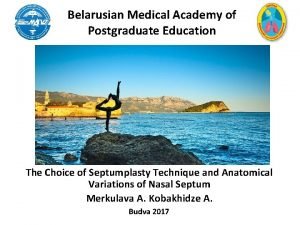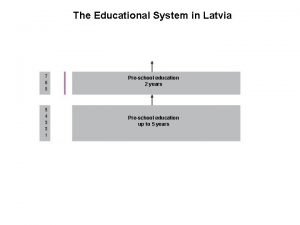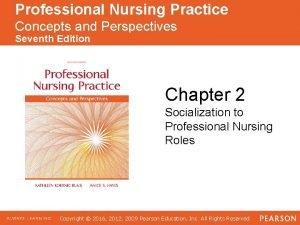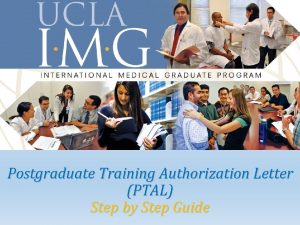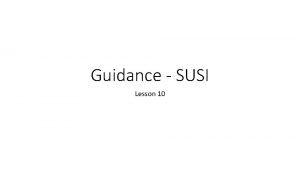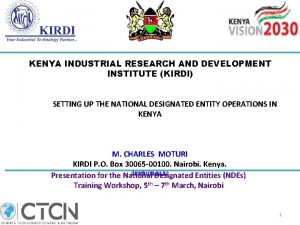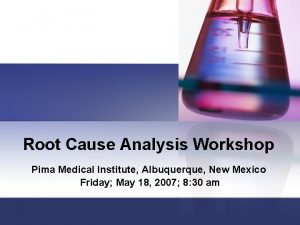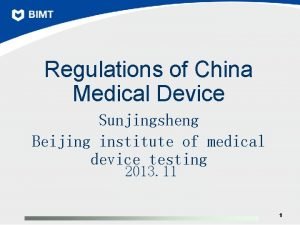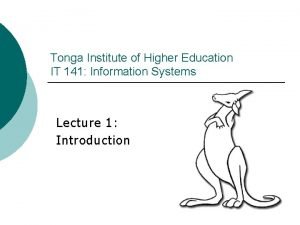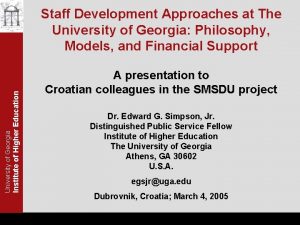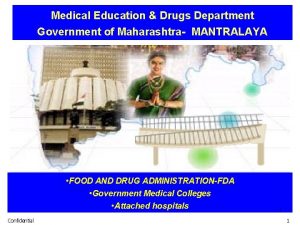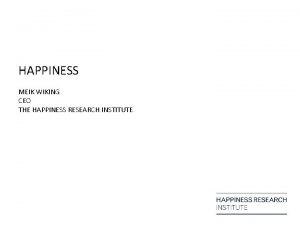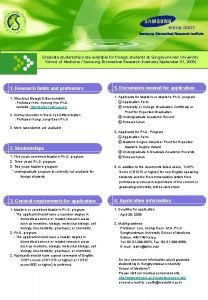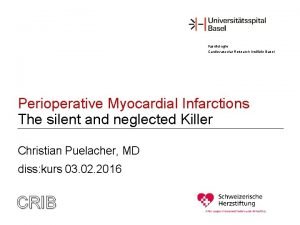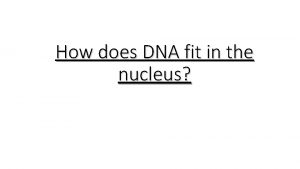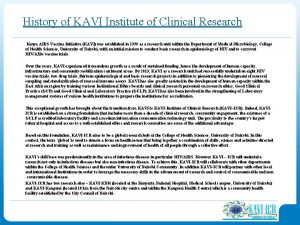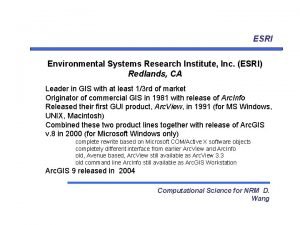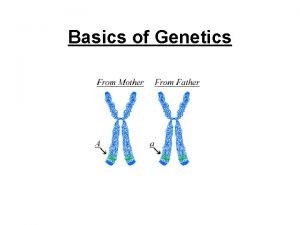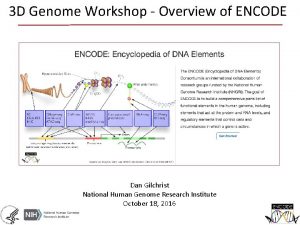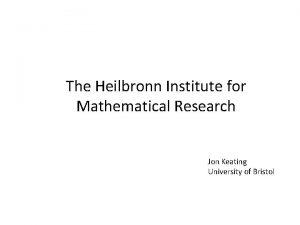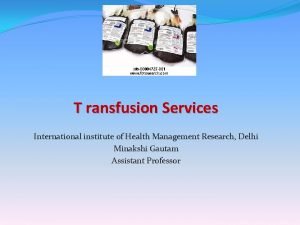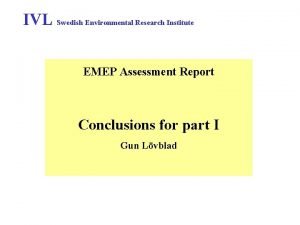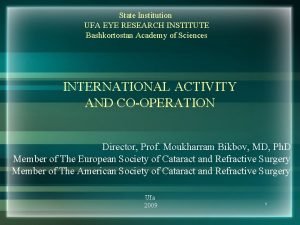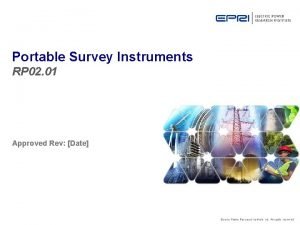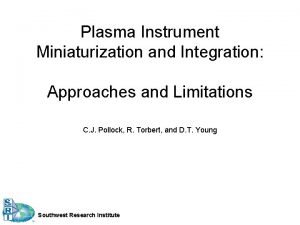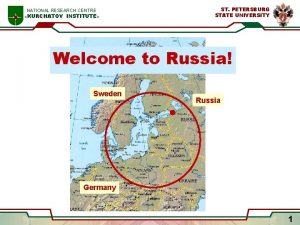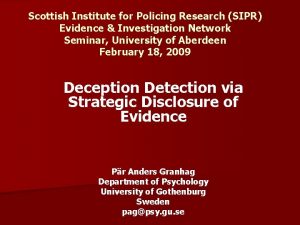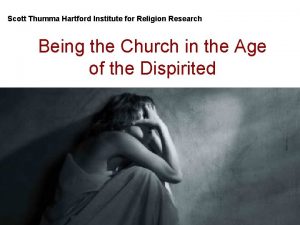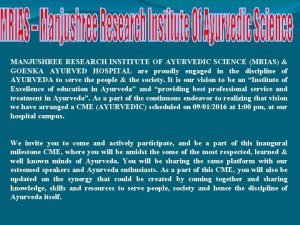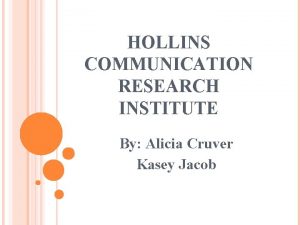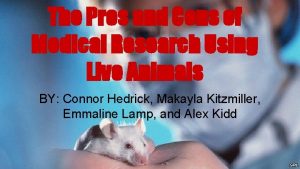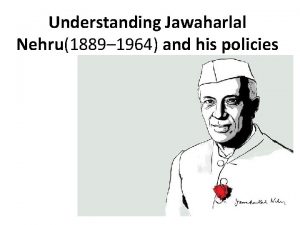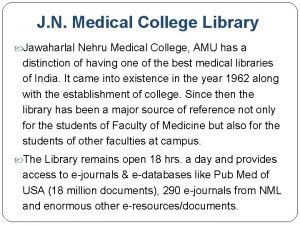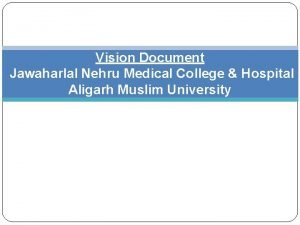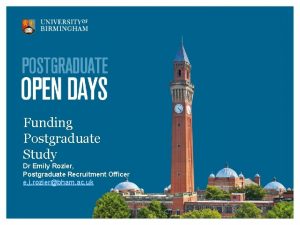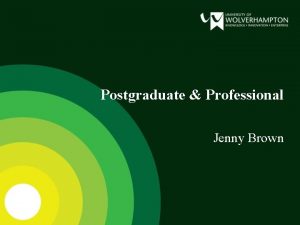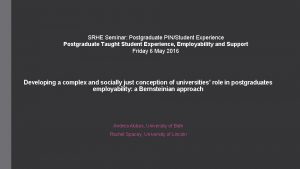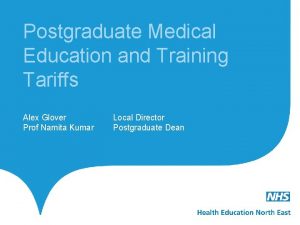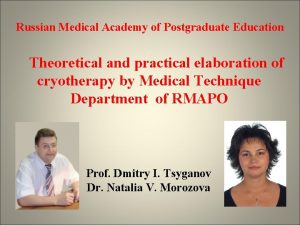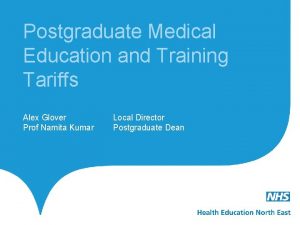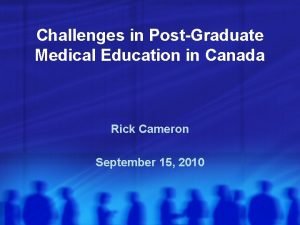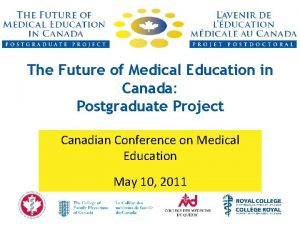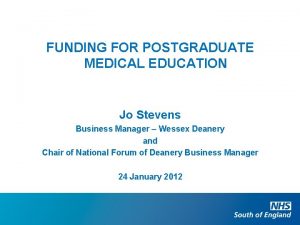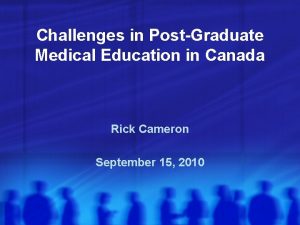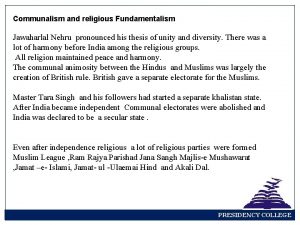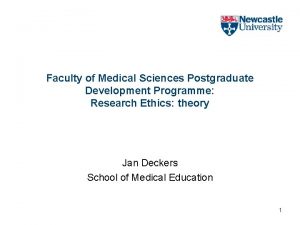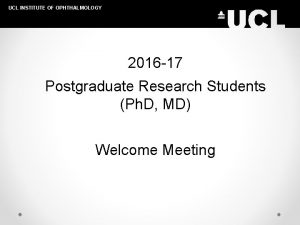JAWAHARLAL INSTITUTE OF POSTGRADUATE MEDICAL EDUCATION AND RESEARCH




















































































- Slides: 84

JAWAHARLAL INSTITUTE OF POST-GRADUATE MEDICAL EDUCATION AND RESEARCH PONDICHERRY (An Institution of National Importance under the Ministry of Health Government of India )

AUSCULTATION OF THE HEART BALACHANDER J DIRECTOR-PROFESSOR & HEAD DEPARTMENT OF CARDIOLOGY JIPMER PONDICHERRY

SCOPE OF THE LECTURE RHEUMATIC VALVULAR HEART DISEASES l NON-RHUEMATIC VALVULAR HEART DISEASES l CONGENITAL HEART DISEASES l MYOCARDIAL DISEASES l PERICARDIAL DISEASE l

RHEUMATIC VALVULAR HEART DISEASE l l l l MITRAL STENOSIS MITRAL REGURGITATION AORTIC STENOSIS AORTIC REGURGITATION TRICUSPID STENOSIS. TRICUSPID REGURGITATION MULTIVALVULAR DISEASES AND COMBINATIONS A. MS+MR B. MS +AR C. MS+TR D. MS+AS E. MS+AS+AR F. MS+AS+TS G. MR+AR H. MR+AS IMPACT OF AF

MITRAL STENOSIS AUSCULTATION

THE FIRST HEART SOUND S 1 IN MS REVERSED SPLITTING OF S 1 l M 1 PRECEDES T 1 l LOUD S 1 CLOSING SNAP l AF AND M 1 TYPE 1: MS IS MILD M 1 DOES NOT BECOME LOUD AFTER LONG DIASTOLES. TYPE 2: SEVERE STENOSIS AND CALCIFICATION: M 1 LOUDNESS DIRECTLY PROPORTIONAL TO LENGTH OF PREVIOUS DIASTOLES. TYPE 3: MOD STENOSIS AND PLIABLE: M 1 LOUDNESS INVERSELY PROPORTIONAL TO LENGTH OF PREVIOUS DIASTOLES. l

Phonocardiographic (Phono) recording from a patient with mitral stenosis showing the loud intensity first heart sound caused by the loud mitral component M 1.

Diagrammatic illustration of the left ventricular (LV) and left atrial (LA) pressure curves in a patient with mitral stenosis showing the diastolic pressure gradient between LA and the LV reflecting the mitral stenosis. When the rising LV pressure with onset of systole exceeds that of the LA, the mitral valve will close. Note that the tangent to LV pressure drawn at the point of the crossover of the two pressure curves during this phase of LV systolic pressure rise is steep, showing that the ventricle has achieved a faster rate of contraction and higher d. P/dt.

THE SECOND HEART SOUND IN MS l. THE LOUDNESS OF P 2 CORRESPONDS WITH THE DEGREE OF PULMONARY HYPERTENSION l. S 1 LOUDER AT THE BASE THAN S 2 EXTRA LOUD S 1 l. NORMAL OR NARROW SPLITTING

THE OPENING SNAP CAUSES OF MITRAL OPENING SNAP 1. MITRAL STENOSIS 2. DOMINANT MR DUE TO POST LEAFLET 3. VSD 4. PDA 5. TRICUSPID ATRESIA 6. THYROTOXICOSIS 7. BT SHUNT FOR TOF 8. CONGENITAL MS? 9. MITRAL VALVE PROLAPSE 10. MASSIVE ASCITES (PSEUDOKNOCK SOUND) 11. TUMOR PLOP OF LA MYXOMA

Phonocardiogram (Phono) recording taken at the apex area from a patient with rheumatic mitral stenosis who had a previous mitral valve commissurotomy for relief of the obstruction. The S 1 is relatively loud. Note a sharp sound following the S 2, which is the opening snap (OS). The OS occurs almost simultaneously with the most nadir point of the apex tracing, which is termed the O point.

Stop frame of a two-dimensional echocardiogram from a patient with mitral stenosis in the parasternal long axis at onset of diastole showing the typical bowing of the anterior mitral leaflet (arrow). Note that the leaflet tip is pointing posteriorly because of tethering caused by the stenosis making a funnel-like opening. Part of the column of blood trying to enter the left ventricle (LV) from the left atrium (LA) during diastole is oriented toward the belly of the leaflet. When the leaflet excursion reaches its anatomical limits caused by the tethering, this column of blood is suddenly decelerated. This leads to the production of the opening snap (OS).

OTHER CAUSES OF MITRAL OS VSD l PDA l TRICUSPID ATRESIA l THYROTOXICOSIS l AFTER BT SHUNT l ? CONGENITAL MS l ? TUMOR PLOP OF LA MYXOMA l

THE 2 -OS INTERVAL AND THE SEVERITY OF MS FACTORS CONTROLLING DURATION OF THE 2 -OS INTERVAL ARE 1. LA PRESSURE AT MV OPENING. 2. THE HEART RATE. 3. THE STIFFNESS OF MV 4. LV CONTRACTILITY AND RELAXATION 5. AV CLOSING PRESSURE

Note that the distance between the A 2 and the OS is shorter with the higher left atrial pressure.

A) Diagram showing simultaneous left ventricular (LV) and left atrial (LA) pressures in mild, moderate, and severe degrees of mitral stenosis. The more severe the stenosis, the higher will be the left atrial pressure. The opening snap (OS) occurs at the end of the isovolumic relaxation phase of the left ventricle when the left ventricular pressure falls just below the left atrial pressure. The OS will therefore tend to occur earlier with higher LA pressure and later with lower LA pressure. Thus, the S 2 -OS interval is short with severe mitral stenosis and long with mild mitral stenosis. (B) Visual representation of the excursion of the mitral leaflets in mitral stenosis of different degrees of severity: a, normal; b, mild; c, moderate; d, severe. With milder stenosis the column of blood has to travel further before deceleration against the valve, thereby making a late OS.

CAUSES OF A LATE OS 1. 2. 3. 4. 5. 6. 7. MILD DEGREE OF MS CALCIFIED MV BRADYCARDIA POOR MYOCARDIAL FUNCTION AORTIC REGURGITATION. LARGE LA LOW LA PRESSURE LOW FLOW. HIGH AORTIC PRESSURE

SOFT OR ABSENT OS IN MS l l l l OBESITY EMPHYSEMA MV CALCIFICATION FIBROSIS CONGENITAL MS LOW FLOW DUE TO A. SEVERE MS B. SEVERE PAH C. AS OR TS D. MYOCARDIAL DYSFN LARGE RV MOD TO SEVERE AR

Note that the higher the aortic pressure the longer the A 2 OS interval.

DIFFERENTIATING A 2 -P 2 FROM A 2 -OS l l l If the second component of a split S 2 is louder or as, loud at the apex as elsewhere, it is probably an OS. If the second component of an S 2 split becomes softer on inspiration at the lower left sternal border (in the absence of LBBB), it is probably a mitral OS. A widely split S 2 on inspiration, that appears to become, wider on expiration is an OS, in the absence of LBBB. A triple second sound, in which the three sounds are close enough together to sound like a snare-drum, implies than an OS is present as the final component. If a split second sound becomes wider on standing, its, second component is an OS. If the S 1 is soft the second component of the S 2 is not likely to be an OS.

On inspiration, the S 2 split opened up into its A 2 and P 2 components. Together with the OS, a triple second sound is heard that produces a snare-drum effect.

DIFFERENTIAL DIAGNOSIS OF A MITRAL OPENING SNAP l The early S 3 of constrictive pericarditis – “Pericardial Knock” l The Tumor-plop of a left atrial myxoma. l A vegetation on the mitral valve that moves rapidly form the left atrium into the LV and strikes the base of the ventricular septum.

THE S 3 AND MITRAL STENOSIS l l l If the Diastolic murmur of MS begins with a loud sound, that sound is probably on S 3. In the French literature the loud S 3 -like beginning of the diastolic murmur has been called the “initial jerk” of the MS murmur. A right ventricular S 3 may be heard in MS if the right atrial pressure is high and the RV is dilated due to pulmonary hypertension and congestive failure. If the enlarged RV usurps the apex area, the S 3 may be heard well into the middle of the left thorax and may be mistaken for an LVS 3.

THE DIASTOLIC MURMUR OF MITRAL STENOSIS : l l The diastolic murmur of MS begins just after the opening snap (OS). This means that there must be a pause due to isovolumic relaxation between the A 2 and the diastolic murmur. Because of the pause that usually occurs after the S 2, the MS murmur is called an early delayed diastolic murmur. The typical shape of the diastolic murmur of MS on auscultation is initial crescendo, decrescendo rumble and late crescendo upto to the M 1.

The crescendo murmur to the M 1 in MS (“Presystolic murmur”) : l l As the mitral orifice is reduced by LV contraction, the velocity of flow increases as long as the pressure is higher in the left atrium than in the LV. In AF the late crescendo occurs at the end of short diastoles because only during short diastoles is the left atrial pressure high enough to maintain high-velocity flow during pre-isovolumic contraction. It requires a gradient of more than 10 mm. Hg at the onset of LV contraction to create a crescendo murmur to the M 1. The presence of a crescendo murmur to the M 1 indicates that the valve must be sufficiently flexible to change the size of the orifice; that is, it must not be rigidly calcified (although it may be too fibrosed or calcified for a valvotomy). Important MR complicating MS can eliminate this pre-M 1 accentuation even in sinus rhythm.

FACTORS INCREASING MS MURMUR LOUDNESS Expiration l Healthy LV l Concomitant MR A Grade 4/6 MS murmur –at least Moderate Stenosis in the absence of MR If MS murmur radiates to the base 1. Severe MS 2. No Systemic levels of PAH l

MANEVERS TO INCREASE THE MS MURMUR INTENSITY Coughing l Post-Valsalva Release Phase l Slow down Heart Rate l Squatting : Increase CO for a few beats l Hand-Grip : Increase CO, Increase HR l Exercise l Amyl Nitrite l

FACTORS SOFTENING THE MS MURMUR l l l Mild MS Obesity Emphysema Low Flow A large RV pushing the LV Posteriorly Coincidental ASD Severe PAH TS or AS Very Much Dilated LA Cardiomyopathy AF-Loss of Atrial Contraction

MITRAL STENOSIS AND AF In AF the MS murmur disappears at the end of a long diastole because 1. There is Mild MS-gradient disappears. 2. There is so severe MS-Flow is low.

SILENT MS l Completely immobile calcified MV l Second area of stenosis below the valve l Postero-medially deviated MV orifice l Large ASD (Lutembacher’s Syndrome

ETIOLOGY 1. RHD 2. Large LA Myxoma 3. Congenital MS: “ Parachute” MV 4. Calcified Bacterial Vegetation. 5. Mitral Ring Constriction due to localised constrictive pericarditis. 6. Carcinoid Syndrome with PFO/ASD

DIFFERENTIAL DIAGNOSIS l Flow Murmur-Severe MR, VSD l Hypertrophic Cardiomyopathy l Normally functioning porcine valve l S 3 which resembles MS l The Austin-Flint Murmur l Coarctation of Aorta

MITRAL REGURGITATION AUSCULTATION

THE FIRST HEART SOUND S 1 IN MR l Gradient in early and middiastole/MS gradient throughout diastole. l 50% have Soft M 1 l If LV is not damaged M 1 may be loud l 70% MR with PMD have Loud S 1

THE SECOND HEART SOUND IN MR l. Widely Split S 2 in MR-Early A 2 Due to Shortened Ejection Time because LV has two outlets. l. But there is also more volume to be ejected. l. S 2 is not Wide Split in Mild to Mod MR l. LV ejection times are Normal l. MR can delay the onset of LV Contraction.

DIFFERENTIATING S 3 FROM OPENING SNAP l l OS not more than 100 ms from S 2. S 3 is rarely less than 120 ms from S 2. OS: Short sharp click best heard with the diaphragm near the LSB. S 3 heard with the bell near the apex. OS associated with a Loud S 1 OS separates further from the A 2 when the patient stands-S 3 does not change the distance on standing.

EFFECT OF LONG DIASTOLES AF l l l l HOLOSYSTOLIC: “HOLOS” Greek word meaning “Wholly”, “Complete”, “Entire” and “all” PANSYSTOLIC: American from Greek: “Each, “Every”, “all” Murmur Remains Holosystolic during long Diastoles. Murmur can become softer in 1. MVP MR 2. PMD MR Murmur can become louder in Type B WPW

A high- and medium-frequency phonocardiogram taken at the apex together with an external carotid tracing from a 45 -year-old woman with moderately severe chronic rheumatic MR, with few symptoms on digitalis alone. Because of atrial fibrillation, short and long diastoles are present, demonstrating that the murmur does not grow louder after long diastoles than after short or average diastoles.

CAUSES OF MR MURMUR IN ADULTS l l l l l RHD MVP PMD RCT LA MYXOMA CALC MITRAL ANNULUS ECD WITH CLEFT AML ASD WITH MR HOCM

CAUSES OF MR MURMUR IN INFANTS ECD l ALCAPA l SFE l Acute Myocarditis l Myxomatous Degn of MV- Marfan’s Syndrome l Ebstein’s Anomaly with CTGV l

SHAPES OF MR MURMUR Note that when the MR murmurs begin late, they always go to the second sound, and when they begin early, they always start with the first sound. HOLOSYSTOLIC RHD LOUDEST MR RCT PMD CRESCENDO TO S 2 MVP MR MVP WITH STANDING ACUTE MR

A noncontracting papillary muscle may make its chordae-plus-papillary muscle relatively longer as the ventricle becomes smaller. This is most likely to produce a murmur that becomes progressively louder as systole proceeds (crescendo murmur to the S 2).

MR MURMUR EXTENDS BEYOND S 2 Note that the LV pressure is above left atrial pressure, even after the A 2.

This is a left atrial (wedge) and LV pressure tracing from a 23 -year-old woman with ruptured mitral chordae. The shaded area is under the left atrial (wedge) pressure curve. The slight delay in the peak wedge pressure is due to the fact that wedgepressures (taken by a catheter wedged into the distal pulmonaryarterial branches) always show a delay in comparisonwith direct left atrial pressure tracings. The rapid increase in. V-wave pressure during systole rapidly decreases the gradient across the mitral valve and will tend to cause both a decrescendo gradient and murmur. The decompressing effecton the LV of the massive loss of blood into the left atriumcauses a late systolic fall in LV pressure. This end-systolicdecrease in LV pressure further decreases the gradient acrossthe mitral valve toward the end of systole.

(A) Excised mitral valve from a patient with myxomatous prolapsed posterior leaflet (PL), who had acute on chronic mitral regurgitation secondary to ruptured chordae. The clip around it shows the ruptured rough zone chordae of the PL. AL, Anterior leaflet. (B) Phonocardiographic (Phono) recording taken at the apex area from the patient with acute on chronic mitral regurgitation whose excised mitral valve is shown in (A). The regurgitation murmur is followed by a third heart sound (S 3).

Simultaneous recordings of electrocardiogram (ECG), apexcardiogram (Apex), and phonocardiogram (Phono) from a patient with ischemic heart disease and papillary muscle dysfunction. The regurgitant murmur is late systolic in timing and appears to peak toward the end of systole.

Phonocardiographic (Phono) recording taken at the apex area from a patient with acute severe mitral regurgitation showing a fourth heart sound (S 4) indicating that the left ventricle, which is not very dilated offers resistance to filling.

LOUDNESS SITE RADIATION OF MR MURMUR l Slightly Lateral to the Apical Impulse l Radiates to the Axilla l MR Murmur heard at LSB-ECD with Cleft AML

These views of the valve rings from above show posterior ruptured chordae (on left) can direct the regurgitant stream against the aorta and cause the murmur to be transmitted like an aortic ejection murmur. The diagram at right shows how ruptured anterior chordae can direct the regurgitant stream posteriorly against the spine.

CAUSES OF SILENT SEVERE MR l Concomitant MS l Obesity l Emphysema l Prosthetic Mitral valve due to suture breakdown

QUANTITATING DEGREE OF MR THE MR IS GREATER IF 1. Large LV by Palpation. 2. Greater and later LPSH (Left Atrial Pulsation) 3. Palpable S 3 4. Louder and longer the Apical Systolic Murmur. 5. More Low and medium fequency murmur High gradient: High Frequency High Flow: Low frequency –The greater the flow, the more the low) 6. Loud S 3 7. Wide Split S 2

This phonocardiogram and apical pulse tracing is from a 15 -year-old girl with severe rheumatic MR. The pulse tracing was taken over the LV impulse in the supine position and is therefore an apex precordiogram instead of an apex cardiogram, which is taken in the left lateral decubitus position. The phonocardiograms are from the third left parasternal interspace. The upper one is taken at medium frequency; the lower one brings out low and medium frequencies. Note the following signs of severe MR: (1) the widely split S 2 of 50 ms; (2) the diastolic flow murmur after the S 3; (3) the exaggerated early rapid filling peak of the apical impulse (this would be palpable in the left lateral decubitus position).

EFFECTS OF DRUGS AND MANEUVERS Increasing SVR: MR becomes louder l Diff Long Systolic murmurs due to AS/MR With Handgrip, Squatting: AS: No Change MR: Louder Standing: Even though increases SVR does not increase MR l Decreasing SVR by Amyl Nitrite: Decreases MR l

MITRAL VALVE PROLAPSE AUSCULTATION

(A) Two-dimensional echocardiographic image of the left ventricle (LV), the aorta (AO), and the left atrium (LA) in the parasternal long axis from a patient with redundant myxomatous posterior mitral leaflet scallops with prolapse and mitral regurgitation. Stop frame taken relatively early in systole shows the bulging posterior mitral leaflet (arrow) prolapsing into the LA. (B) Simultaneous recordings of electrocardiogram (ECG), carotid pulse (CP), apexcardiogram (Apex), and phonocardiogram (Phono) from a patient with prolapsed mitral valve syndrome taken from the apex area showing a mid-systolic nonejection click (NEC). (C) Simultaneous recordings of ECG, CP, Apex, and Phono from a patient with prolapsed mitral valve syndrome taken from the apex area showing two clicks (C) in systole.

The midsystolic sound was a click heard loudest at the apex in this 45 - year-old woman. The murmur following it is crescendo to the S 2. This is the classic ballooned valve click-murmur complex by auscultation.

Simultaneous recordings of ECG, Apex, and Phono from a patient withprolapsed mitral valve syndrome taken from the apex area showing a systolic murmur confined to late systole.



EFFECT OF MANEUVERS ON THE MVP l l Standing, Inspiration and Valsalva: Click and murmur occur earlier and often louder. Click Louder in L. Lat Decubitus. BP: Decreases: Click and murmur become softer. Amyl Nitrite: Immediate: Click occurs earlier but murmur becomes softer After 30 s: BP increases hence it becomes louder Murmur becomes pansystolic

DIFF PMD MURMUR FROM MVP MURMUR (Without Click) PMD MURMUR l Associated With S 4, Loud S 1 l Softer after long diastoles. l Increase with squatting or Amyl Nitrite l MVP MURMUR l No S 4 or Loud S 1 l Become softer with Squatting and immediately after Amyl Nitrite

OTHER CAUSES OF MID SYSTOLIC CLICKS 1. 2. 3. 4. 5. 6. 7. 8. 9. 10. 11. 12. Small Left sided pneumothorax. Pleural-pericardial adhesions, adhesive pericarditis. Aneurysm of the Inter-Ventricular Septum. (VSD Closure) Complete absence of the pericardium. Isolated Bicuspid Pulmonary Valve with RBBB Severe AR (Traube Pistol Shot Sound). Pacemaker Sound. Atrial Myxoma Right or Left. CHB Ventricular Aneurysms. Aneurysm of the Atrial Septum Swan-Ganz Catheter.

REFERENCE BOOKS Bedside Cardiology: Jules Constant l The Art and Science of Cardiac Physical Examination N. Ranganathan l Essentials of Bed-Side Cardiology: Jules Constant l Clinical Methods in Cardiology: Soma Raju. l Clinical Cardiology: Indranill Basu Ray l Cardiology Secrets : O. V. Adair l

THANK YOU

AORTIC STENOSIS AUSCULTATION

THE REVERSED OR PARADOXICALLY SPLIT S 2 IN AS The reversed split in AS implies that the gradient is at least 60 mm hg or more l The LV has reched its peak Systolic pressure of 250 Mm Hg. l Subtract the brachial artery systolic pressure and get the exact gradient across the AV. l

If the split narrows on inspiration, the P 2 must come first, and the split S 2 is reversed.

HOW TO IDENTIFY THAT THE WIDE SPLIT IS ACTUALLY REVERSED l Move Stethoscope from LSB to Apex Second Component Disappears- A 2 - P 2 If First Component becomes soft- P 2 -A 2 l Move Stethoscope from Apex to 2 RICS First Component Heard- A 2 -P 2 Second Component Heard- P 2 -A 2 l l Component increasing with inspiration-P 2 During Valsalva P 2 Comes early- Split Widens-Reversed Split Normal- Split narrows l During release of Valsalva- Split narrows- P 2 -A 2

If the split is fixed at the left sternal border, it may be difficult to tell whether it has a normal or paradoxical sequence. Toward the apex, the component that becomes relatively softer must be the P 2.

S 4 IN AS In valvular AS it suggests a severe gradient of at least 70 mm. Hg across the aortic valve. l This is not valid either in subjects with angina, in whom ischemic heart disease may be an additional causeof an S 4. l Subjects with hypertrophic obstructive cardiomyopathy (HOCM), may have an S 4 with any gradient. l

EJECTION SYSTOLIC MURMUR IN AS l l Mid Systolic is a Poor Term-A regurgitation murmur can also have a Crescendo. Decrescendo shape and end before A 2 Loudness of the murmur Grade 2 or less: No important gradient Grade 4: 20 mm. Hg gradient l Later the peak and longer- more the stenosis Q-Peak: Less than 200 ms- Severe Stenosis (Valve area Less than 0. 75 cm 2 unlikely Q-Peak: More than 240 ms- Severe Stenosis Use Doppler point of Maximal Velocity

A simultaneous aortic and LV pressure tracing (taken with a catheter-tip micromanometer to eliminate time delays through tubes) in a subject with valvular AS. The shape of the murmur follows the shape of the gradient (shaded area).

THE GALLAVARDIN PHENOMENON l l l The high-frequency components tend to radiate to the apex and may even sound musical at this site suggesting a murmur of MR. This is called the. Gallavardin phenomenon, which is especially common in the elderlypatient, in whom the murmur of calcific AS often sounds musical or cooingat the apex. Commissural fusion is commonly absent in these valves, which allows the cusps to vibrate and produce pure frequencies.

Since aortic ejection murmurs and clicks are often best heard at the apex area, and aortic regurgitation murmurs are usually best heard along the left lower sternal border or midsternum, it should no longer be taught that the “aortic area” is the second right interspace.

A phonocardiogram and simultaneous aortic and LV pressure tracing from a 16 -yearold boy with valvular AS. Not only did the murmur and gradient increase after the long diastole, but the ejection sound also increased. Note that the small gradient of the premature ventricular contraction (PVC) itself produced only a short early systolic murmur.

Summary of Auscultatory Clues to the Diagnosis of Severe Aortic Stenosis l l l The AS is probably severe, i. e. , the gradient is at least 70 mm Hg, or in the presenceof congestive heart failure at least 50 mm Hg, if: 1. An S 4 is present in a patient under age 40. 2. The murmur is long with its peak in mid-systole, is at least grade 4/6, and is associated with a soft or absent A 2. 3. The S 2 has a reversed split provided there is no marked poststenotic dilatation to further delay the A 2. The area of the normally open aortic valve is 3– 4 cm 2. Symptoms usually do not develop until the area is reduced to about a third of normal or 1– 1. 5 cm 2, and patients even with this degree of narrowing may remain asymptomatic for decades. The presence of any of the triad of Angina, Syncope, Dyspnea plus LVH implies a gradient of more thjan 80 mm. Hg. Unless there is decreased myocardial function Some are symptom-free with orifices of 0. 5 cm 2.

AORTIC REGURGITATION AUSCULTATION

HEART SOUNDS IN AR l l l l A 2 tends to be loud in AR With Severe AR A 2 becomes soft. Embryocardia: When Diastole becomes shorter than Systole Adults: “Tick-Tack” rhythm Severe AR can produce a Tick-Tack Rhythm without a tachycardia- increased volume in Systole can prolong Systole more than Diastole. S 3 means LV dysfunction Sudden Severe AR: Mid-Diastolic S 1 S 4 can occur in Chronic AR (Rheumatic)

DIASTOLIC MURMUR OF AR l l Crescendo-Decrescendo Good Dicrotic Wave- Rebound Effect of the Aortic leaflets-occurs when AR is mild Pandiastolic murmur: AR is at least moderate. Dominant Frequency-High Moderate AR: Greater flow: Mixed frequencies. Severe AR: Rough Murmur

INCREASING LOUDNESS OF AR MURMUR Patient Sit up, lean forward, breath held in expiration. l Increase SVR: Squatting, Handgrip l AR with Soft murmur; Trivial if Diastolic BP more than 70 mm Hg and pulse pressure is less than 40 mm. Hg l Underestimated in presence of MS l Combine Squatting and handgrip: Squat and Squeeze maneuver l

MUSICAL AR MURMUR Infective Endocarditis l Everted leaflets(Luetic) l RSOV l THE DOVE-COO MUSICAL MURMUR Made by the vibrations of the Aorta itself l

This murmur was due to mild syphilitic AR. It was loudest at the second and third right interspaces. Note the slight early crescendo–decrescendo. A systolic murmur due to blood going in one direction, together with a diastolic murmur due to blood going in the opposite direction, is called a to-and-fro murmur.

Luetic AR was suspected as the cause of this aortic diastolic murmur. Note the regular vibrations seen in all phonocardiograms of musical murmurs. Dove-Coo Murmur

 Belarusian medical academy of postgraduate education
Belarusian medical academy of postgraduate education Target institute of medical education and research
Target institute of medical education and research Postgraduate education
Postgraduate education Difference between postgraduate and undergraduate
Difference between postgraduate and undergraduate Difference between postgraduate and undergraduate
Difference between postgraduate and undergraduate Kramer's postgraduate resocialization model stages
Kramer's postgraduate resocialization model stages Undergraduate graduate postgraduate
Undergraduate graduate postgraduate Postgraduate training authorization letter
Postgraduate training authorization letter Susi grant income limits
Susi grant income limits Clinical governance postgraduate
Clinical governance postgraduate Alexmed postgraduate
Alexmed postgraduate Judicial education institute of trinidad and tobago
Judicial education institute of trinidad and tobago Sagar institute of research and technology
Sagar institute of research and technology Electronics and telecommunications research institute
Electronics and telecommunications research institute Prof ram meghe institute of technology and research
Prof ram meghe institute of technology and research Swedish national road and transport research institute
Swedish national road and transport research institute Kenya industrial research and development institute
Kenya industrial research and development institute Pima medical institute dress code
Pima medical institute dress code Beijing medical equipment institute
Beijing medical equipment institute Difference between medical report and medical certificate
Difference between medical report and medical certificate Uq eap
Uq eap Nj institute for continuing legal education
Nj institute for continuing legal education Tonga institute of higher education
Tonga institute of higher education Uga institute of higher education
Uga institute of higher education Medical education and drugs department
Medical education and drugs department Australian primary health care research institute
Australian primary health care research institute Telethon institute for child health research
Telethon institute for child health research Assistive technology implementation plan
Assistive technology implementation plan Croatian forest research institute
Croatian forest research institute Happiness research institute
Happiness research institute Bill harris holosync
Bill harris holosync Primary control vs secondary control
Primary control vs secondary control Samsung biomedical research institute
Samsung biomedical research institute Isgemiese hartsiekte
Isgemiese hartsiekte National human genome research institute
National human genome research institute National human genome research institute
National human genome research institute Kavi institute of clinical research
Kavi institute of clinical research Environmental systems research institute inc
Environmental systems research institute inc Digital enterprise research institute
Digital enterprise research institute National human genome research institute
National human genome research institute Encode
Encode Heilbronn institute for mathematical research
Heilbronn institute for mathematical research World research institute
World research institute Environmental systems research institute
Environmental systems research institute National research institute of brewing
National research institute of brewing International institute of health management research
International institute of health management research Korea automobile testing & research institute
Korea automobile testing & research institute Kncap test protocol
Kncap test protocol Ivl swedish environmental research institute
Ivl swedish environmental research institute Hong kong institute of educational research
Hong kong institute of educational research The potsdam institute for climate impact research
The potsdam institute for climate impact research Cfa institute
Cfa institute Institute for urban policy research
Institute for urban policy research Commerce development research institute
Commerce development research institute Ufa eye research institute
Ufa eye research institute Electric power research institute
Electric power research institute Research institute
Research institute Norwegian institute for nature research
Norwegian institute for nature research National research center kurchatov institute
National research center kurchatov institute National research center kurchatov institute
National research center kurchatov institute E learning portal on agricultural education
E learning portal on agricultural education Scottish institute for policing research
Scottish institute for policing research Hartford institute for religion research
Hartford institute for religion research Peace research institute frankfurt
Peace research institute frankfurt Northern institute for cancer research
Northern institute for cancer research Netherlands institute for social research
Netherlands institute for social research Manjushree research institute of ayurvedic science
Manjushree research institute of ayurvedic science Kumc research institute
Kumc research institute Kazusa dna research institute
Kazusa dna research institute Industrial technology research institute
Industrial technology research institute Hcri stuttering therapy cost
Hcri stuttering therapy cost Trend research institute
Trend research institute Pros and cons of animal research
Pros and cons of animal research Animal testing for medical research pros and cons
Animal testing for medical research pros and cons California medical license application
California medical license application Gbmc medical records
Gbmc medical records Torrance memorial medical center medical records
Torrance memorial medical center medical records Cartersville medical center medical records
Cartersville medical center medical records Venn diagram formal education and nonformal education
Venn diagram formal education and nonformal education Differentiate between health education and health promotion
Differentiate between health education and health promotion Ministry of education and research romania
Ministry of education and research romania Range cattle research and education center
Range cattle research and education center National research and education network
National research and education network Nepal research and education network
Nepal research and education network National research center for career and technical education
National research center for career and technical education
